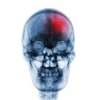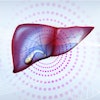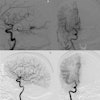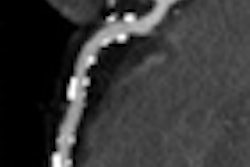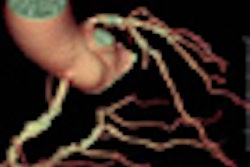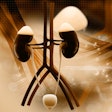The use of a sedative instead of anesthesia for pediatric patients having interventional radiology (IVR) procedures is advantageous because it's easier to schedule, less costly, and potentially safer for the patient, according to recent research.
At Children's Hospital Boston in Massachusetts, interventional radiologists supervise a nursing-administered ketamine protocol for approximately one-third of the procedures they perform. Dr. Keira Mason, director of radiology anesthesia and sedation at the hospital, described the use of ketamine as a sedative to induce immobilization, and the interventional radiology team's experience with it for the past seven years, in a presentation at the 2008 RSNA conference in Chicago.
Mason and colleagues developed a ketamine protocol in 2001 as an alternative to general anesthesia. Ketamine (ketamine hydrochloride, Abbott Laboratories, Abbott Park, IL) causes the rapid onset of deep sedation and analgesia with minimal respiratory depression and cardiovascular side effects. Patients who benefit the most have asthma or cystic fibrosis or are respiratory-compromised, according to Mason.
Ketamine-induced sedation of a portion of pediatric patients can positively contribute to patient throughput and interventional suite utilization because the services of an anesthesiologist are not needed. In many hospitals, the number of pediatric interventional radiology procedures has increased, while the number of anesthesiologists has remained constant or decreased.
In addition, the relatively short recovery time of patients can reduce the number of hours spent by radiology nurses in postprocedure recovery rooms.
Children's Hospital Boston pioneered the use of ketamine as a sedative for pediatric patients undergoing interventional testing and developed the first protocols. The drug had been used clinically for pediatric patients since the 1970s, primarily by emergency physicians and oncologists. Ketamine replaced a mixture of pentobarbital, midazolam, and fentanyl, which carried the risk of oversedation and respiratory depression, Mason explained.
"Ketamine is advantageous because this single drug has sedative, analgesic, and amnestic properties," Mason said. "It is able to preserve the airway reflexes with minimum respiratory effects, and it works rather quickly. It does not induce myocardial depression. And it is inexpensive."
The drug induces spontaneous ventilation and increased secretions. Patients have a mild to moderate increase in blood pressure of approximately 20%, along with increased myocardial contractility and increased coronary perfusion, but there is no effect on cardiac rhythm, according to Mason.
Ketamine can be administered muscularly or intravenously, either by bolus or continuous infusion, by radiology nurses certified in pediatric life support under the supervision of an interventional radiologist. "Our protocol requires that glycopyrrolate be administered prior to ketamine to minimize the increased salivary and tracheobronchial secretions that occur. Administering anticholinergic agents such as glycopyrrolate diminishes the rare risk of laryngospasm," Mason explained.
In the hospital's experience, the duration of ketamine sedation averages 50.4 minutes, with an average procedure time of 42.6 minutes. Recovery time averages 60 minutes.
Ketamine protocol for pediatric interventional procedures
|
Responding to a question about whether the Joint Commission allows radiologists to administer ketamine, Mason stated that the Joint Commission does not specify the sedative radiologists may or may not use. "All the Joint Commission specifies is that the choice of sedative is appropriate for the depth of sedation that is required, and that the radiologist and support team are able to rescue the patient from that appropriate depth," she explained.
Side effects and contraindications
Sedated patients often vocalize, complaining or describing vivid dreams. Teenagers, in particular, may have hallucinations or experience agitation. Patients' eyes are often open, with a disconnected stare. Radiologists should be aware of these side effects because they can be distracting and disconcerting the first time they are experienced.
Patients who have glaucoma, complex cardiac disease, and intracranial hypertension should not be given ketamine. Nor should patients who are bipolar or have another psychiatric disease, or who have had a prior adverse reaction to the drug.
Patients meet discharge criteria within one hour, but one potential unpleasant side effect is vomiting that may occur in the recovery room. Pretreatment with Zofran or Decadron may not reduce or eliminate vomiting, according to Mason.
Children's Hospital Boston statistics
Between 2001 and 2007, the hospital used ketamine for 590 patients, ranging in age from 4 months to 18 years (mean, 5.7 years). A total of 611 procedures were performed, including placement of 358 peripheral intravenous central catheters, 54 chest tubes, and 50 drainage tubes. Eighty-nine biopsies were also performed.
Mason stated that no patient has had critical adverse events, and cardiopulmonary resuscitation or endotracheal intubation has never been needed. Eleven children had brief oxygen desaturations, and four required brief positive pressure mask ventilation.
Ninety-eight percent of the patients and/or their parents had no complaints about the use of ketamine. Two percent complained of the side effects of vomiting, hallucination, and agitation from the drug.
"Implementation of a ketamine sedation program gives radiologists a new level of independence in scheduling and performing interventional procedures," Mason concluded. "When radiologists and nurses operate as a team and have appropriate anesthesia backup, ketamine sedation is a safe, effective alternative to anesthesia."
By Cynthia E. Keen
AuntMinnie.com staff writer
March 13, 2009
Related Reading
Anesthesiologists refine pediatric sedation for MRI, October 25, 2007
Copyright © 2009 AuntMinnie.com
